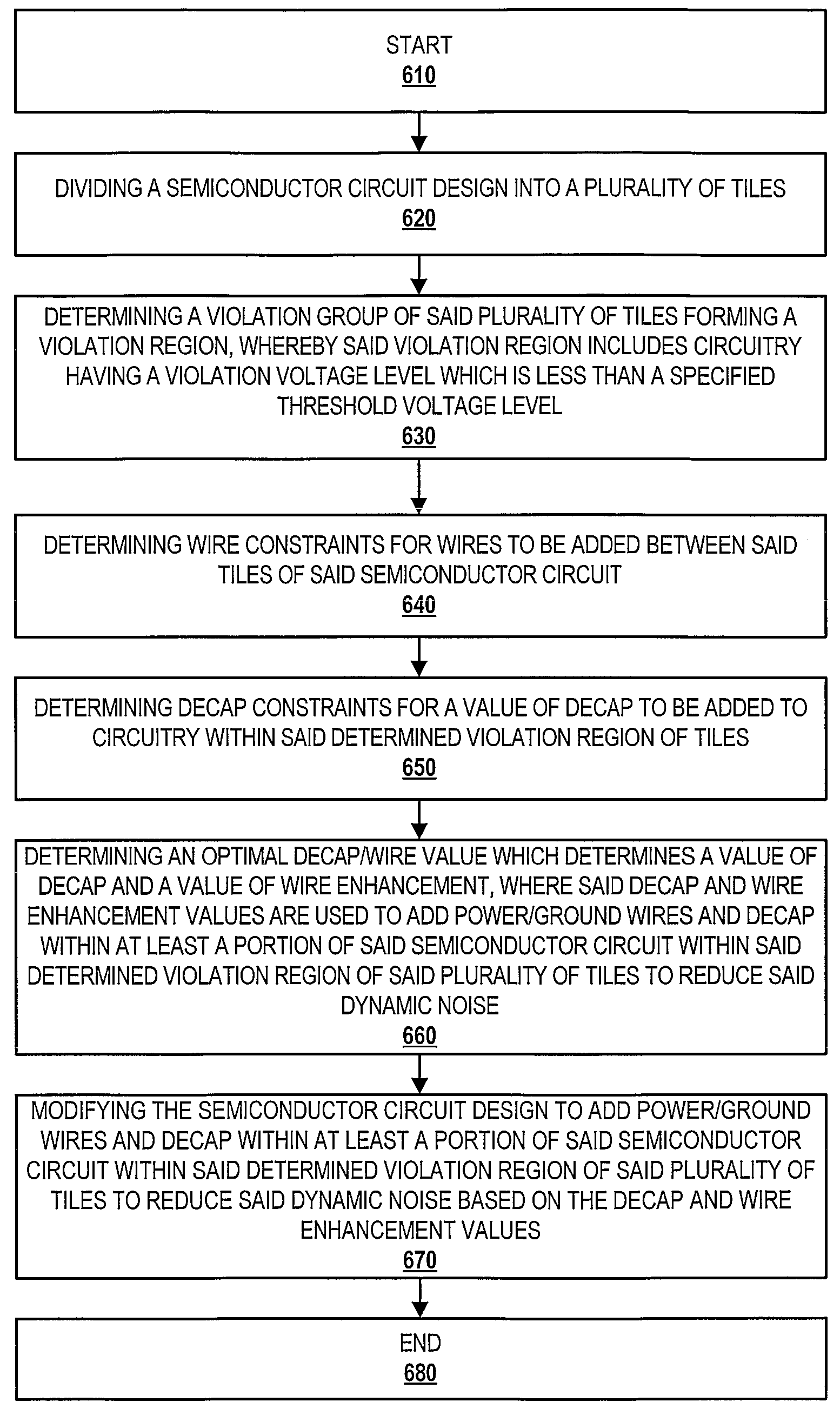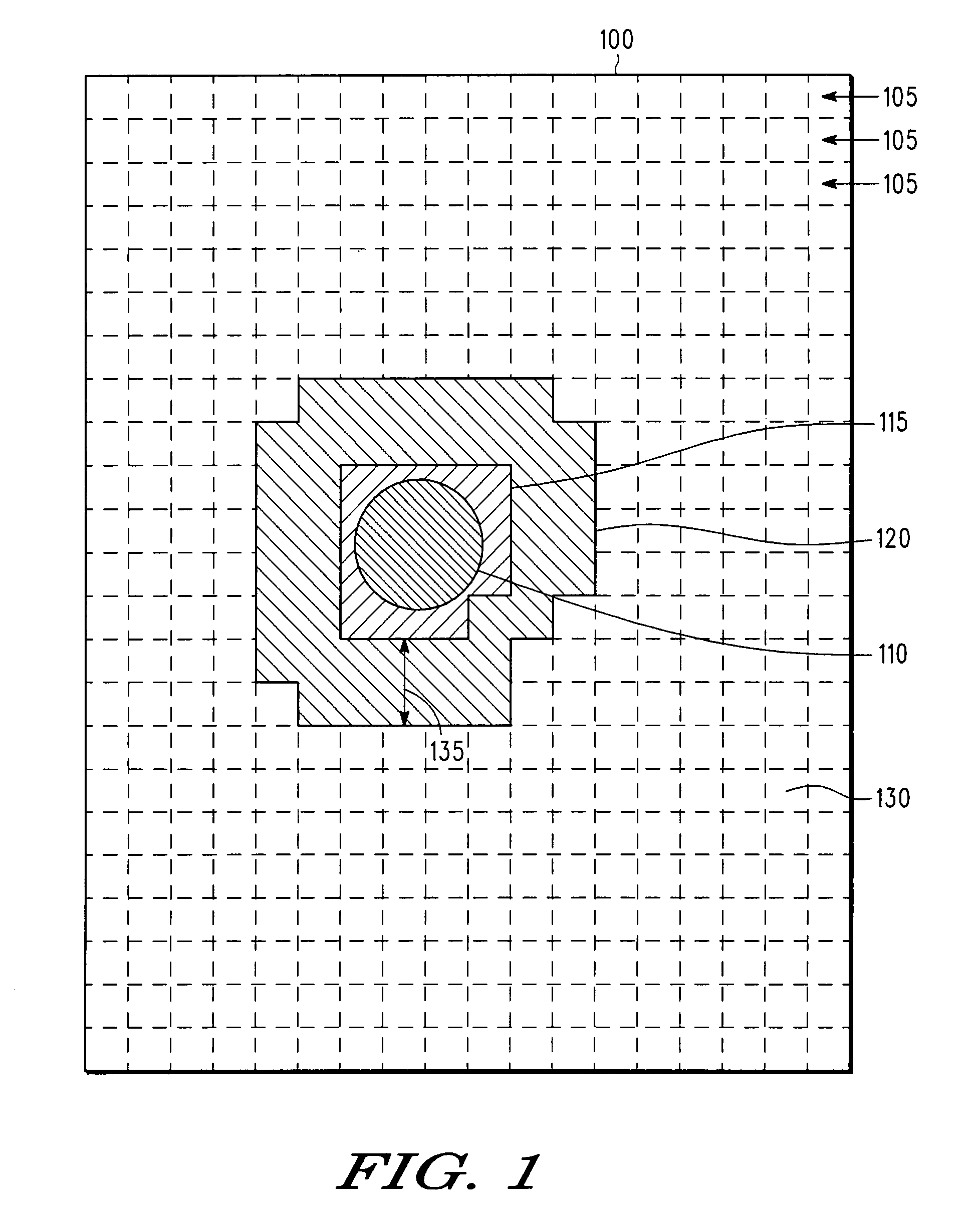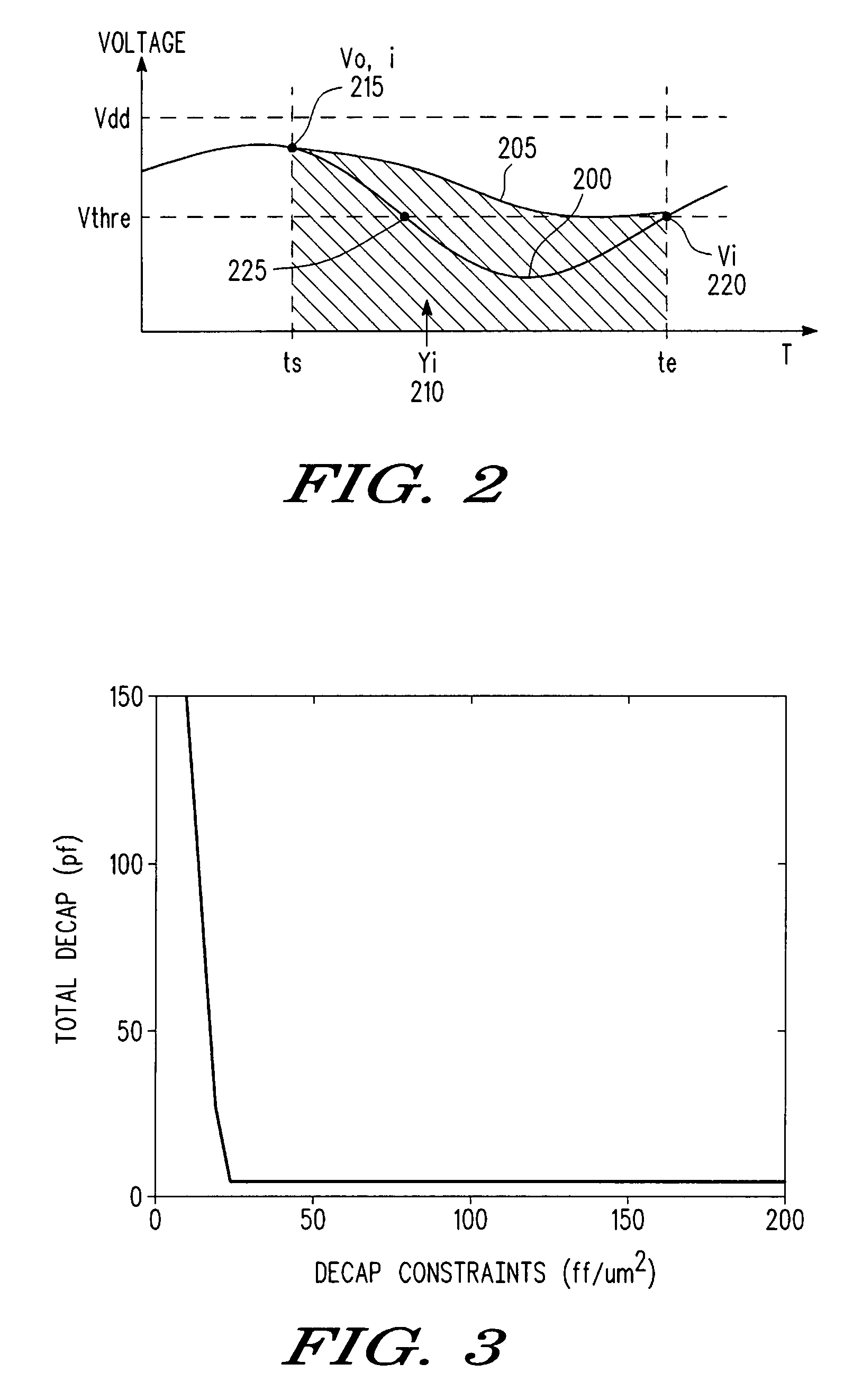On-chip decoupling capacitance and power/ground network wire co-optimization to reduce dynamic noise
a technology of power/ground network wire and capacitance decoupling, which is applied in the field of on-chip decoupling capacitance and power/ground network wire cooptimization to reduce dynamic noise, and can solve the problems of chip design, ever increasing removal, and chip circuit malfunction
- Summary
- Abstract
- Description
- Claims
- Application Information
AI Technical Summary
Benefits of technology
Problems solved by technology
Method used
Image
Examples
Embodiment Construction
[0021]In the following detailed description of exemplary embodiments of the invention, specific exemplary embodiments in which the invention may be practiced are described in sufficient detail to enable those skilled in the art to practice the invention, and it is to be understood that other embodiments may be utilized and that logical, architectural, programmatic, mechanical, electrical and other changes may be made without departing from the spirit or scope of the invention. The following detailed description is, therefore, not to be taken in a limiting sense, and the scope of the invention is defined only by the appended claims.
[0022]The method of a preferred embodiment eliminates the problems of the techniques found in the prior art and determines the optimal amount of and the location for decaps, to reduce dynamic supply noise in a circuit quickly and accurately. The method of a preferred embodiment also determines whether local wiring enhancements should be made to further red...
PUM
 Login to View More
Login to View More Abstract
Description
Claims
Application Information
 Login to View More
Login to View More - R&D
- Intellectual Property
- Life Sciences
- Materials
- Tech Scout
- Unparalleled Data Quality
- Higher Quality Content
- 60% Fewer Hallucinations
Browse by: Latest US Patents, China's latest patents, Technical Efficacy Thesaurus, Application Domain, Technology Topic, Popular Technical Reports.
© 2025 PatSnap. All rights reserved.Legal|Privacy policy|Modern Slavery Act Transparency Statement|Sitemap|About US| Contact US: help@patsnap.com



